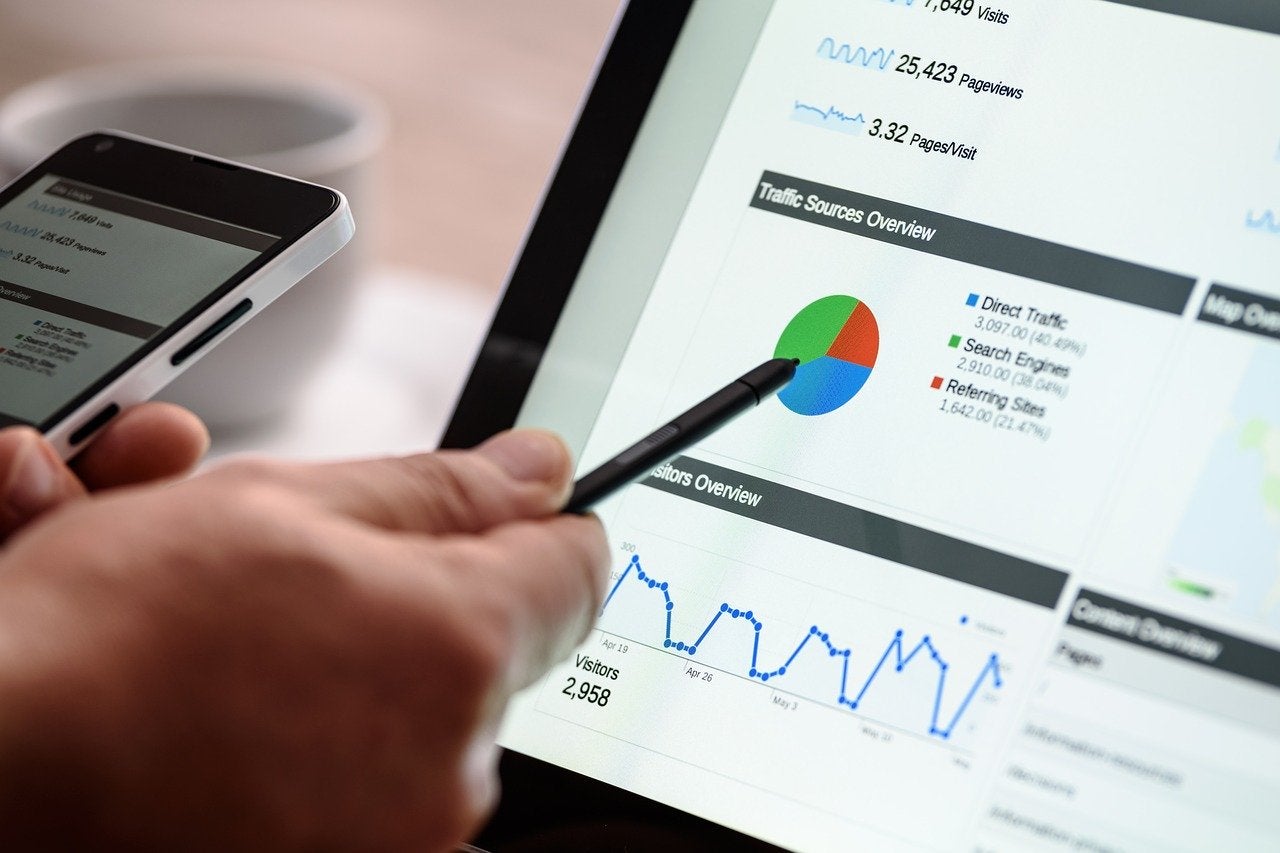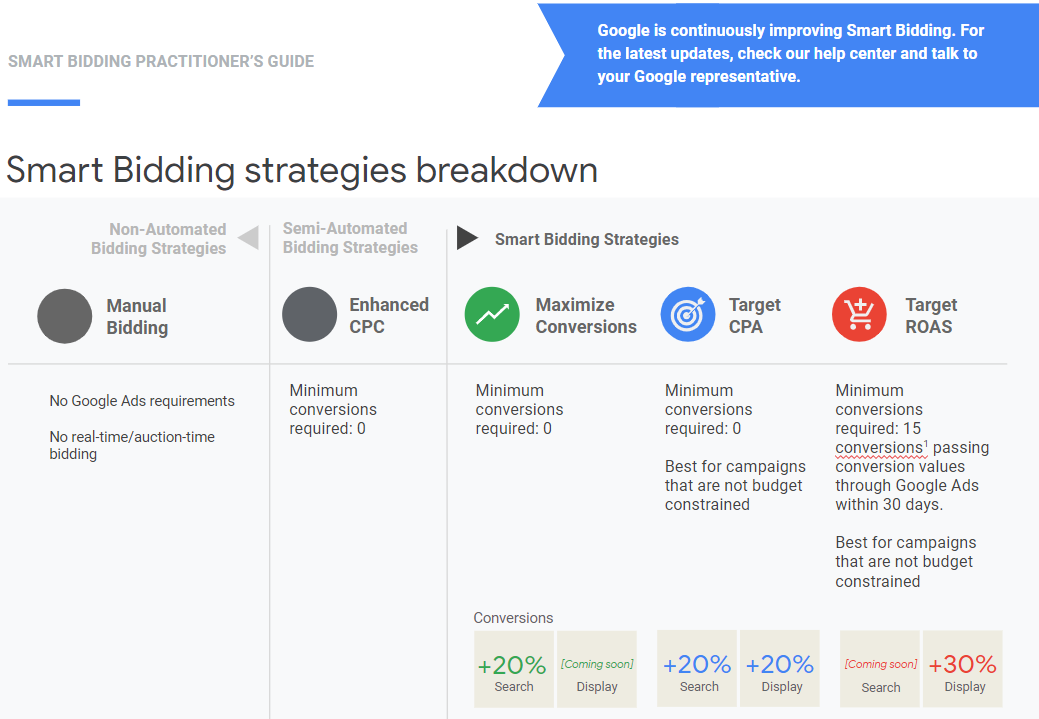
As a digital marketer, you’re used to being strapped for time. We get it! That’s just one more reason to leverage Google’s ever-evolving Smart Bidding.
Across the PPC division at Seer, we’re leaning into automation as much as possible. This includes testing various bid strategies in our paid accounts in an effort to reach our client’s goals and also get us back time to work on bigger picture strategy and optimizations.
While smart bidding does take away a layer of control from an account team, leveraging the engine’s machine learning allows us to work faster, work smarter, and win more. Further, these strategies help get us closer to performance goals, without surpassing financial limits you may have.
Decide Which Smart Bidding Strategy to Test
First, examine the bidding strategies available and determine which is best for your client based on past performance.
In our case, we considered:
- This account has pretty aggressive CPA goals that we’re admittedly not too close to hitting at the moment! Because of this, we want to test a strategy that will help us get closer to those numbers.
- Are you or your client extra aware of any metric in particular? In this case, CPC is a factor we keep a close eye on. Keeping this in mind will help you make more thoughtful recommendations.
- Look at each of the active campaigns and see what performance is like (conversions, CVR, CPA). From there, recommend bid strategy tests that will help us move the CPA needle closer to where we need to be. This could be tCPA, Max Convs, etc.
Taking the above into account, we determined the following strategies would be best to test:
- Max Conversions:Drives as many conversions as possible within the specified budget.
- Target CPA:Attains as many conversions as possible, while maintaining our target CPA.
- Enhanced CPC: eCPC helps you get more conversions from manual bidding by automatically adjusting manual bids for clicks that seem more or less likely to lead to a sale or conversion on your website.
At the time we pitched these strategies to our client, our NonBrand campaigns were set to eCPC due to conversion tracking issues we were remedying. Before this switch, our campaigns were running on Target CPA. You’ll see in the below graphic that while eCPC is semi-automated and a great starting point, conversions start to increase significantly when a campaign is switched to one of the three smart bidding strategies.
For several campaigns, we recommended a 50/50 split test to run for 30 days. Especially if budget is on the lower end, focusing on increasing efficiencies is the best place to focus your efforts. See our recommendations below:
Launch Campaign Experiments
 Once the client reviewed our recommendations, we ended up implementing the following strategies in four campaigns:
Once the client reviewed our recommendations, we ended up implementing the following strategies in four campaigns:
Test a 50/50 experiment for Manual CPC and Max Conversions bidding strategies
Analyze Performance to Determine Next Steps
Things to Keep in Mind with Smart Bidding:
- It typically takes ~2 weeks for the algorithms to calibrate for a newly implemented strategy.
- You’ll want to limit the number of changes made to the campaigns once transitioned to smart bidding
Once your experiments have run for some time (we recommend 30 days), it’s time to dig into performance and decide the best next steps.
Insights:
- Since launching on 10/4, Campaign 1’s experiment (Max Conversions) spent 14.38% less than its Manual CPC counterpart but drove a similar conversion volume at a 6.01% lower CPA.
- CVR was 10.61% higher with Max Conversions, and CPCs were almost the same.
- While we felt confident about Max Conversions being the right bidding strategy for Campaign 1, we recommended running for one more month to see if the experiment’s performance could continue to grow past evergreen’s Manual CPC.
- Similar to Campaign 1, Campaign 2’s Max Conversions experiment spent 17.38% less than its Manual CPC counterpart but drove 94.44% more conversions.
- This makes the experiment significantly more efficient, spending less ad budget while achieving greater results.
- CPA in the experiment is 95.41% lower than the evergreen Campaign 2 campaign, while CVR is 1,572.79% higher.
- With results this strong, we recommended ending the test and moving this campaign to be fully Max Conversions.
- This makes the experiment significantly more efficient, spending less ad budget while achieving greater results.
Google Continues Evolving and Improving Smart Bidding
Gain More Insight into Your Bid Strategy with Top Signals
Google recently added a Top Signals section in the Bid Strategy Report within the UI. This shows signal combinations that are more or less likely to convert. This could be helpful for reporting on bid strategy performance or generally explaining performance improvements if you’re using tCPA or Max Conversions. Learn more here.
Wanting to learn more about smart bidding? Reach out and our Paid team would be happy to chat! Don’t forget to sign up for our newsletter to stay up to date on upcoming Seer events, industry updates, and all things digital.













